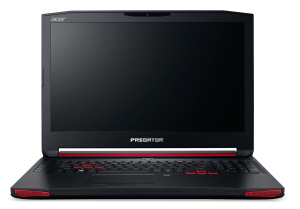SanDisk Z410 review – reliable SSD that will boost your system’s performance

Most people already know that the main bottleneck for the quick operation of contemporary computers is their HDDs. Hard drives are convenient when you want to organize large collections of songs and movies. But that’s probably their only positive feature.
Cloud systems and services seem to have made storing multimedia on your computer unnecessary, considering that you can easily access whatever it is that you want thanks to the constant Internet connection. The moving elements in hard drives make these devices dangerous for the data you store on them, in case you accidentally drop or hit your computer while its working. However, the most unpleasant feature of this type of drives is their low speed – the OS and apps are slow to load, the drive is noisy, and the effectiveness – low. If you have never used an SSD, you probably think that all this is normal but once you get a taste of the SSD experience, there is no way back – Solid State Drives use super fast flash memory, they’re quiet and reliable.
SanDisk is one of the companies that have long proved their product quality, and in today’s review we would like to talk about their latest and affordable SSD – Z410. This is the third class TLC NAND-based SATA SSD in the manufacturer’s portfolio, together with X400 and Z400S, which are targeted at business and mainstream users, respectively.
You can check all currently available SanDisk SSDs HERE, as well as all Z410 devices here: http://amzn.to/2dX1A50
Contents
Specs sheet
For this review we picked the largest and fastest modification of SanDisk Z410 – the 480GB version. Here are the specs of all three models placed in one table.
| SanDisk Z410 SSD | 120GB | 240GB | 480GB |
|---|---|---|---|
| Form factor | 2.5″, 7 mm | 2.5″, 7 mm | 2.5″, 7 mm |
| Interface | SATA III (6 Gb/s) | SATA III (6 Gb/s) | SATA III (6 Gb/s) |
| Size and weight | 7.0 x 69.85 x 100.5 mm; 32 grams | 7.0 x 69.85 x 100.5 mm; 32 grams | 7.0 x 69.85 x 100.5 mm; 32 grams |
| Performance [4K QD32] | |||
| Sequential read rate | 535 MB/s | 535 MB/s | 535 MB/s |
| Sequential write rate | 410 MB/s | 440 MB/s | 445 MB/s |
| Random read (IOPS) | 36k | 36k | 37k |
| Random write (IOPS) | 54k | 66k | 68k |
| Hours endurance (TBW) | 40 | 80 | 120 |
| MTTF | up to 1 750 000 hours | up to 1 750 000 hours | up to 1 750 000 hours |
| Price | Check price | Check price | Check price |
Retail package
SanDisk Z410 came into our office in a beautiful black and red box without any accessories or discs with software. Actually, the latter is not needed at all, considering that it’s easier to download the SSD Dashboard app from SanDisk’s official webpage.
Direct link: http://kb.sandisk.com/app/answers/detail/a_id/15108/~/sandisk-ssd-dashboard-support-information
Inside SanDisk Z410
TLC-based SSDs are becoming more popular on the market because they manage to offer a price for a GB which is quite close to that offered by HDDs, while at the same time eliminating the number of negative HDD features that were discussed above. But where is the catch? The cells of TLC (Three-level cell) carry much more information than SLC (Single-Level Cell) and MLC (Multi-level cell), and this establishes the need for significantly more frequent overwriting, which leads to shorter product life.
This, of course, is logical, considering the main selling point of these devices – their price. It allows more and more users to replace their conventional HDD with an SSD, thus increasing their system’s performance considerably. In the same time, SanDisk’s official information points out a very reasonable durability of up to 1 750 000 hours MTTF (Mean Time To Failure) and 120 TBW (for the 480GB version).
Also notable is the fact that SanDisk Z410 is not offered in an M.2 form factor, in comparison to the previous X400 and Z400s models.
SanDisk Z410 features a 4-channel SM2256S TLC controller, allowing a design without DRAM, which reduces production (and respectively end-user) costs. More about it you can read in this PDF.

Z410 uses SLC cache which is there to increase the performance in your everyday tasks and processes. It won’t be of much benefit when working with or transferring large files, and the company does not give any info about its size (and difference in the several sizes of Z410). However, it seems that for the 480GB version it is around 6GB because we registered a considerable decrease of write speed namely around this point. Of course, this is not a very common scenario, and it won’t affect your normal operation.

Software – SanDisk SSD Dashboard
SanDisk SSD Dashboard is a convenient and simple instrument for monitoring the features and life of the American company’s SSDs. The first thing that caught our attention here is that even though the app managed to get precise info about the drive (Model String, Serial number, Maximum LBA, and World Wide Name), it did not guess the name and displayed “SanDisk SSD Plus”. Considering that we are talking about a model with the same flash memory, controller, and PCB/design, we can’t say that it’s a gross mistake, and the pleasant interface and features of SSD Dashboard fully compensate for it.
In the “Status” page of SSD Dashboard you will find information about the device’s capacity and free space, remaining life, data about temperature and the interface used.
In the next tab – “Performance“, you will find a chart displaying the SSD activity, and the menu on the left allows you to activate or deactivate the TRIM technology. You can also schedule a regular clearance of the drive from already deleted files.
Additionally, the “Tools” tab lets you update the firmware, as well as eliminate all files on the drive with the help of Secure Eraze, Sanitize or Crypto Erase. It is here that you could start a short or long S.M.A.R.T. test for diagnostics and analysis, as well as receive detailed information about the SSD and computer in which it has been installed.
From “Settings” you can update the Sandisk SSD Dashboard app, set up an automatic launch together with Windows, choose your language and receive emails from the SSD Dashboard support team.
“Help” is the last tab – it provides links to the support page, user forums, and user manual.
Testing system and installation
For the tests of SanDisk Z410 we used Acer Predator 17 (G9-793) in the following configuration:
| CPU | Intel Core i7-6700HQ (4-core, 2.60-3.50 GHz, 6MB cache) |
|---|---|
| RAM | 32GB (2x 16384MB) – DDR4, 2133MHz |
| GPU | NVIDIA GeForce GTX 1070 (8GB GDDR5) |
| SSD | SanDisk Z410 SSD 480GB |
| OS | Microsoft Windows 10 Professional (64-bit) |
It takes a minute or so to install an SSD as long as your laptop has a service hatch (such is present in most models). In our case, we had to unscrew two screws and open the hatch, remove the HDD and replace it with SanDisk Z410. The blue component in the photo below is a shock-absorbing case, which reduces the risk of data loss in HDDs. When it comes to SSDs, it is not so valuable, but it still is handy for keeping the 7mm thin construction of Z410 into one place.
Benchmarks
All our tests were performed with High-Performance mode active, deactivated Windows write-cache buffer flushing, and activated Windows write caching.
ATTO Disk Benchmark
ATTO is one of our favorite benchmarks, “draining” the maximum performance from the carriers of valuable information. In our case, SanDisk Z410 reached 531MB/s in sequential reading and 420MB/s in sequential writing.

AS SSD Benchmark 1.9
AS SSD Benchmark is another convenient software for synthetic SSD testing. Z410 got 502 MB/s and 400 MB/s in sequential reading and sequential writing, respectively.
Bear in mind that if you are trying to test your SSD in AS SSD, and get the error “AS SSD could not open device \\.\PHYSICALDRIVE0”, this is most probably because of the SanDisk SSD Dashboard software or another diagnostic app – you will just have to turn it off.
CrystalDiskMark 5.1.2
CrystalDiskMark is one of the most popular applications for testing this type of devices. It is often used by the manufacturers themselves so as to prove the information they officially present. Here Z410 reached the highest sequential read rate – 542.7MB/s, and as far as the sequential write rate goes – we got 419.1 MB/s.

Copying of a 20GB file
We talked above about the situation with TLC-based SSDs when it comes to writing large files. We shall perform a real-life test here, copying a 19.5GB file from a Samsung SSD SM951 NVMe (256GB) to SanDisk Z410. It took us 74 seconds (1 minutes and 14 seconds), and the average transfer speed was 272 MB/s.
Performance comparison
| SSD | Seq. Read (1GB) | Seq. Write (1GB) | Random Read (4K) | Random Write (4K) | Price |
|---|---|---|---|---|---|
| SanDisk Z410 (480GB) | 542.7 MB/s | 419.1 MB/s | 25.07 MB/s | 82.17 MB/s | Check price |
| ADATA Premier SP550 (240 GB) | 540.3 MB/s | 485.3 MB/s | 30.14 MB/s | 92.56 MB/s | Check price |
| AMD Radeon R3 SSD (480GB) | 560.7 MB/s | 516.8 MB/s | 30.15 MB/s | 122.17 MB/s | Check price |
| Transcend 220S SSD (480GB) | 513.2 MB/s | 443.9 MB/s | 27.20 MB/s | 64.24 MB/s | Check price |
| Samsung SSD 750 EVO (500GB) | 540.7 MB/s | 519.3 MB/s | 45.60 MB/s | 142.00 MB/s | Check price |
Verdict
At the time of the publication of this review the price per GB of the Sandisk Z410 models is approximately $0.44/GB (120GB), $0.35/GB (240GB), and $0.33/GB (480GB). It is namely the low price that is the main selling point of Z410, and we also have to consider the manufacturer’s good name. Additionally, this product’s performance is relatively “budget” and standard for today’s mainstream SSDs with TLC flash and SATA III interface, which means that you can’t rely on the very high speeds provided by PCIe solutions but you do receive a good price/performance ratio, as well as a considerable improvement in your machine’s capabilities (if you’ve only used an HDD thus far).
The sequential read and write speeds are good but we can’t say the same thing about the random ones.
You can check all currently available SanDisk SSDs HERE, as well as all Z410 devices here: http://amzn.to/2dX1A50
Pros
- Good price/performance ratio
- Reasonable price for a GB
- Excellent replacement for your conventional HDD
Cons
- Moderate performance in our random read / write tests






















